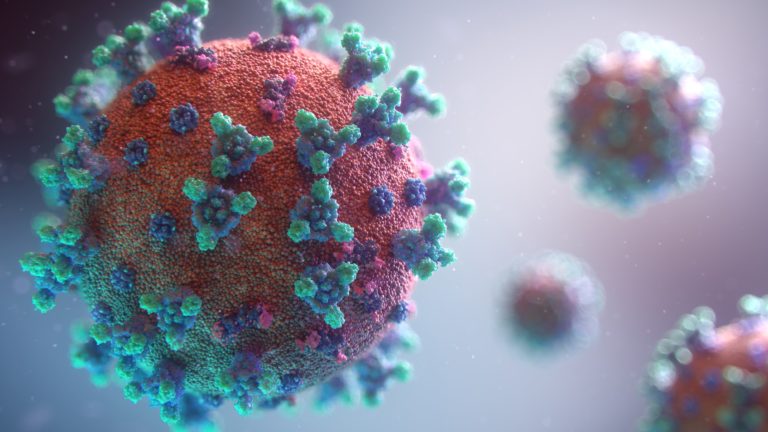June 22, 2020: “Merck and Pfizer Inc. announced that the European Medicines Agency (EMA) has validated for review the Type II variation application for BAVENCIO® (avelumab) for first-line maintenance treatment of patients with locally advanced or metastatic urothelial carcinoma (UC).
With this validation, the application is complete, and the EMA will now begin the review procedure.
The application is based on results from the Phase III JAVELIN Bladder 100 study which showed a statistically significant improvement in overall survival (OS) for BAVENCIO plus best supportive care (BSC) as first-line maintenance treatment following induction chemotherapy versus BSC alone in patients with locally advanced or metastatic UC.
The data were presented at the ASCO 2020 Virtual Scientific Meeting.
In the European Union alone, nearly 200,000 people are diagnosed each year with bladder cancer.
Urothelial carcinoma accounts for approximately 90 percent of bladder cancers.
Urothelial carcinoma becomes harder to treat as it advances, spreading through the layers of the bladder wall.
Despite available therapies, more than 60,000 Europeans die from bladder cancer each year.
Earlier this year, the US Food and Drug Administration (FDA) accepted a supplemental Biologics License Application (sBLA) for first-line maintenance treatment of patients with locally advanced or metastatic UC for Priority Review under the agency’s Real-Time Oncology Review (RTOR) pilot program.
Related News: BAVENCIO (avelumab) extensively Improved Overall Survival in Patients with Locally Advanced or Metastatic Urothelial Carcinoma
The FDA also granted Breakthrough Therapy Designation to BAVENCIO for this indication.
In addition, a supplemental new drug application has also been accepted by Japan’s Ministry of Health, Labour and Welfare for BAVENCIO as a first-line maintenance therapy for locally advanced or metastatic UC.
JAVELIN BLADDER 100
JAVELIN Bladder 100 (NCT02603432) is a Phase III, multicenter, multinational, randomized, open-label, parallel-arm study investigating first-line maintenance treatment with BAVENCIO plus BSC versus BSC alone in patients with locally advanced or metastatic UC.
A total of 700 patients whose disease had not progressed after platinum-based induction chemotherapy as per RECIST v1.1 were randomly assigned to receive either BAVENCIO plus BSC or BSC alone.
The primary endpoint was OS in the two primary populations of all patients and patients with PD-L1+ tumors defined by the Ventana SP263 assay.
BAVENCIO® (AVELUMAB)
BAVENCIO is a human anti-programmed death ligand-1 (PD-L1) antibody. BAVENCIO has been shown in preclinical models to engage both the adaptive and innate immune functions.
By blocking the interaction of PD-L1 with PD-1 receptors, BAVENCIO has been shown to release the suppression of the T cell-mediated antitumor immune response in preclinical models.
In November 2014, Merck KGaA, Darmstadt, Germany and Pfizer announced a strategic alliance to co-develop and co-commercialize BAVENCIO.
BAVENCIO Approved Indications in the US
BAVENCIO® (avelumab) in combination with axitinib is indicated in the US for the first-line treatment of patients with advanced renal cell carcinoma (RCC).
In the US, the FDA granted accelerated approval for BAVENCIO for the treatment of (i) adults and pediatric patients 12 years and older with metastatic Merkel cell carcinoma (mMCC) and (ii) patients with locally advanced or metastatic urothelial carcinoma (mUC) who have disease progression during or following platinum-containing chemotherapy, or have disease progression within 12 months of neoadjuvant or adjuvant treatment with platinum-containing chemotherapy.
These indications are approved under accelerated approval based on tumor response rate and duration of response. Continued approval for these indications may be contingent upon verification and description of clinical benefit in confirmatory trials.
Avelumab is currently approved for patients with MCC in 50 countries globally, with the majority of these approvals in a broad indication that is not limited to a specific line of treatment.
BAVENCIO Important Safety Information from the US FDA-Approved Label
BAVENCIO can cause immune-mediated pneumonitis, including fatal cases. Monitor patients for signs and symptoms of pneumonitis, and evaluate suspected cases with radiographic imaging.
Administer corticosteroids for Grade 2 or greater pneumonitis. Withhold BAVENCIO for moderate (Grade 2) and permanently discontinue for severe (Grade 3), life-threatening (Grade 4), or recurrent moderate (Grade 2) pneumonitis. Pneumonitis occurred in 1.2% of patients, including one (0.1%) patient with Grade 5, one (0.1%) with Grade 4, and five (0.3%) with Grade 3.
BAVENCIO can cause hepatotoxicity and immune-mediated hepatitis, including fatal cases. Monitor patients for abnormal liver tests prior to and periodically during treatment. Administer corticosteroids for Grade 2 or greater hepatitis.
Withhold BAVENCIO for moderate (Grade 2) immune-mediated hepatitis until resolution and permanently discontinue for severe (Grade 3) or life-threatening (Grade 4) immune-mediated hepatitis. Immune-mediated hepatitis occurred with BAVENCIO as a single agent in 0.9% of patients, including two (0.1%) patients with Grade 5, and 11 (0.6%) with Grade 3.
- BAVENCIO in combination with axitinib can cause hepatotoxicity with higher than expected frequencies of Grade 3 and 4 alanine aminotransferase (ALT) and aspartate aminotransferase (AST) elevation. Consider more frequent monitoring of liver enzymes as compared to when the drugs are used as monotherapy.
Withhold BAVENCIO and axitinib for moderate (Grade 2) hepatotoxicity and permanently discontinue the combination for severe or life-threatening (Grade 3 or 4) hepatotoxicity.
Administer corticosteroids as needed. In patients treated with BAVENCIO in combination with axitinib, Grades 3 and 4 increased ALT and AST occurred in 9% and 7% of patients, respectively, and immune-mediated hepatitis occurred in 7% of patients, including 4.9% with Grade 3 or 4.
BAVENCIO can cause immune-mediated colitis. Monitor patients for signs and symptoms of colitis. Administer corticosteroids for Grade 2 or greater colitis. Withhold BAVENCIO until resolution for moderate or severe (Grade 2 or 3) colitis until resolution.
Permanently discontinue for life-threatening (Grade 4) or recurrent (Grade 3) colitis upon reinitiation of BAVENCIO. Immune-mediated colitis occurred in 1.5% of patients, including seven (0.4%) with Grade 3.
BAVENCIO can cause immune-mediated endocrinopathies, including adrenal insufficiency, thyroid disorders, and type 1 diabetes mellitus.
Monitor patients for signs and symptoms of adrenal insufficiency during and after treatment, and administer corticosteroids as appropriate. Withhold BAVENCIO for severe (Grade 3) or life-threatening (Grade 4) adrenal insufficiency. Adrenal insufficiency was reported in 0.5% of patients, including one (0.1%) with Grade 3.
- Thyroid disorders can occur at any time during treatment. Monitor patients for changes in thyroid function at the start of treatment, periodically during treatment, and as indicated based on clinical evaluation.
Manage hypothyroidism with hormone replacement therapy and hyperthyroidism with medical management. Withhold BAVENCIO for severe (Grade 3) or life-threatening (Grade 4) thyroid disorders. Thyroid disorders, including hypothyroidism, hyperthyroidism, and thyroiditis, were reported in 6% of patients, including three (0.2%) with Grade 3.
- Type 1 diabetes mellitus including diabetic ketoacidosis: Monitor patients for hyperglycemia or other signs and symptoms of diabetes. Withhold BAVENCIO and administer antihyperglycemics or insulin in patients with severe or life-threatening (Grade ≥3) hyperglycemia, and resume treatment when metabolic control is achieved.
Type 1 diabetes mellitus without an alternative etiology occurred in 0.1% of patients, including two cases of Grade 3 hyperglycemia.
BAVENCIO can cause immune-mediated nephritis and renal dysfunction. Monitor patients for elevated serum creatinine prior to and periodically during treatment.
Administer corticosteroids for Grade 2 or greater nephritis. Withhold BAVENCIO for moderate (Grade 2) or severe (Grade 3) nephritis until resolution to Grade 1 or lower.
Permanently discontinue BAVENCIO for life-threatening (Grade 4) nephritis. Immune-mediated nephritis occurred in 0.1% of patients.
BAVENCIO can result in other severe and fatal immune-mediated adverse reactions involving any organ system during treatment or after treatment discontinuation.
For suspected immune-mediated adverse reactions, evaluate to confirm or rule out an immune-mediated adverse reaction and to exclude other causes.
Depending on the severity of the adverse reaction, withhold or permanently discontinue BAVENCIO, administer high-dose corticosteroids, and initiate hormone replacement therapy, if appropriate.
Resume BAVENCIO when the immune-mediated adverse reaction remains at Grade 1 or lower following a corticosteroid taper.
Permanently discontinue BAVENCIO for any severe (Grade 3) immune-mediated adverse reaction that recurs and for any life-threatening (Grade 4) immune-mediated adverse reaction.
The following clinically significant immune-mediated adverse reactions occurred in less than 1% of 1738 patients treated with BAVENCIO as a single agent or in 489 patients who received BAVENCIO in combination with axitinib: myocarditis including fatal cases, pancreatitis including fatal cases, myositis, psoriasis, arthritis, exfoliative dermatitis, erythema multiforme, pemphigoid, hypopituitarism, uveitis, Guillain-Barré syndrome, and systemic inflammatory response.
BAVENCIO can cause severe or life-threatening infusion-related reactions. Premedicate patients with an antihistamine and acetaminophen prior to the first 4 infusions and for subsequent infusions based upon clinical judgment and presence/severity of prior infusion reactions.
Monitor patients for signs and symptoms of infusion-related reactions, including pyrexia, chills, flushing, hypotension, dyspnea, wheezing, back pain, abdominal pain, and urticaria. Interrupt or slow the rate of infusion for mild (Grade 1) or moderate (Grade 2) infusion-related reactions.
Permanently discontinue BAVENCIO for severe (Grade 3) or life-threatening (Grade 4) infusion-related reactions.
Infusion-related reactions occurred in 25% of patients, including three (0.2%) patients with Grade 4 and nine (0.5%) with Grade 3.
BAVENCIO in combination with axitinib can cause major adverse cardiovascular events (MACE) including severe and fatal events. Consider baseline and periodic evaluations of left ventricular ejection fraction.
Monitor for signs and symptoms of cardiovascular events. Optimize management of cardiovascular risk factors, such as hypertension, diabetes, or dyslipidemia. Discontinue BAVENCIO and axitinib for Grade 3-4 cardiovascular events.
MACE occurred in 7% of patients with advanced RCC treated with BAVENCIO in combination with axitinib compared to 3.4% treated with sunitinib. These events included death due to cardiac events (1.4%), Grade 3-4 myocardial infarction (2.8%), and Grade 3-4 congestive heart failure (1.8%).
BAVENCIO can cause fetal harm when administered to a pregnant woman. Advise patients of the potential risk to a fetus including the risk of fetal death.
Advise females of childbearing potential to use effective contraception during treatment with BAVENCIO and for at least 1 month after the last dose of BAVENCIO. It is not known whether BAVENCIO is excreted in human milk.
Advise a lactating woman not to breastfeed during treatment and for at least 1 month after the last dose of BAVENCIO due to the potential for serious adverse reactions in breastfed infants.
The most common adverse reactions (all grades, ≥ 20%) in patients with metastatic Merkel cell carcinoma (MCC) were fatigue (50%), musculoskeletal pain (32%), diarrhea (23%), nausea (22%), infusion-related reaction (22%), rash (22%), decreased appetite (20%), and peripheral edema (20%).
Selected treatment-emergent laboratory abnormalities (all grades, ≥ 20%) in patients with metastatic MCC were lymphopenia (49%), anemia (35%), increased aspartate aminotransferase (34%), thrombocytopenia (27%), and increased alanine aminotransferase (20%).
The most common adverse reactions (all grades, ≥ 20%) in patients with locally advanced or metastatic urothelial carcinoma (UC) were fatigue (41%), infusion-related reaction (30%), musculoskeletal pain (25%), nausea (24%), decreased appetite/hypophagia (21%), and urinary tract infection (21%).
Selected laboratory abnormalities (Grades 3-4, ≥ 3%) in patients with locally advanced or metastatic UC were hyponatremia (16%), increased gamma-glutamyltransferase (12%), lymphopenia (11%), hyperglycemia (9%), increased alkaline phosphatase (7%), anemia (6%), increased lipase (6%), hyperkalemia (3%), and increased aspartate aminotransferase (3%).
Fatal adverse reactions occurred in 1.8% of patients with advanced renal cell carcinoma (RCC) receiving BAVENCIO in combination with axitinib. These included sudden cardiac death (1.2%), stroke (0.2%), myocarditis (0.2%), and necrotizing pancreatitis (0.2%).
The most common adverse reactions (all grades, ≥20%) in patients with advanced RCC receiving BAVENCIO in combination with axitinib (vs sunitinib) were diarrhea (62% vs 48%), fatigue (53% vs 54%), hypertension (50% vs 36%), musculoskeletal pain (40% vs 33%), nausea (34% vs 39%), mucositis (34% vs 35%), palmar-plantar erythrodysesthesia (33% vs 34%), dysphonia (31% vs 3.2%), decreased appetite (26% vs 29%), hypothyroidism (25% vs 14%), rash (25% vs 16%), hepatotoxicity (24% vs 18%), cough (23% vs 19%), dyspnea (23% vs 16%), abdominal pain (22% vs 19%), and headache (21% vs 16%).
Selected laboratory abnormalities (all grades, ≥20%) worsening from baseline in patients with advanced RCC receiving BAVENCIO in combination with axitinib (vs sunitinib) were blood triglycerides increased (71% vs 48%), blood creatinine increased (62% vs 68%), blood cholesterol increased (57% vs 22%), alanine aminotransferase increased (ALT) (50% vs 46%), aspartate aminotransferase increased (AST) (47% vs 57%), blood sodium decreased (38% vs 37%), lipase increased (37% vs 25%), blood potassium increased (35% vs 28%), platelet count decreased (27% vs 80%), blood bilirubin increased (21% vs 23%), and hemoglobin decreased (21% vs 65%).
Please see full US Prescribing Information and Medication Guide available at http://www.BAVENCIO.com.
Merck KGaA, Darmstadt, Germany-Pfizer Alliance
Immuno-oncology is a top priority for Merck KGaA, Darmstadt, Germany and Pfizer.
The global strategic alliance between Merck KGaA, Darmstadt, Germany and Pfizer enables the companies to benefit from each other’s strengths and capabilities and further explore the therapeutic potential of BAVENCIO, an anti-PD-L1 antibody initially discovered and developed by Merck KGaA, Darmstadt, Germany.
The immuno-oncology alliance is jointly developing and commercializing BAVENCIO. The alliance is focused on developing high-priority international clinical programs to investigate BAVENCIO as a monotherapy as well as combination regimens, and is striving to find new ways to treat cancer.
https://www.pfizer.com/news/press-release/press-release-detail/european-medicines-agency-validates-application-bavencior












